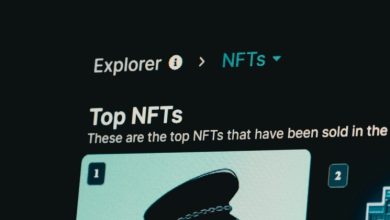A New Approachto Managing Money

FlexBanking is quietly transforming how consumers manage their money. It replaces rigid banking models with a tailored, responsive approach suited for real-world financial habits. Whether juggling multiple income streams or irregular expenses, it offers tools built for actual spending patterns, not just spreadsheets.
Unlike traditional banking with fixed cycles and hard limits, FlexBanking adapts to how people earn and spend. Features like real-time payment tracking, smart alerts, and adaptive savings give users greater control. In an era of financial uncertainty, this approach provides flexibility without extra complexity. This article explores how FlexBanking functions in daily life, why it’s gaining popularity, and what sets it apart from older methods.
How FlexBanking Aligns With Daily Money Habits
One reason FlexBanking resonates with more users each month is that it mimics how people actually use their money. It does not force a calendar-based pattern. Instead, it observes spending behaviors and adjusts timelines, amounts and thresholds accordingly.
For example, if your utility bills fluctuate, you no longer need to overcompensate every month. The system can analyze historical charges and spread payments over weeks, easing the strain on high-expense periods. This makes everyday budgeting feel less like damage control and more like decision-making.
Many platforms offering this service integrate directly with debit accounts and mobile wallets. They track incoming funds, understand outgoing patterns and proactively adjust what’s safe to spend. The result is fewer surprises and more clarity in managing variable expenses.
Tools That Support Adaptive Budgeting
FlexBanking goes beyond automation. It builds budgets based on context. If your income changes month to month, the budgeting tools adjust targets without needing manual resets. Many apps allow you to tag expenses with flexible categories.
A grocery run that includes household goods, pet food and personal care gets split automatically. Over time, the system improves its understanding, sharpening both forecasting and recommendations.
Some of the most powerful features include:
- Automatic balance buffers for low-income weeks,
- Spending suggestions based on past activity,
- Early warnings for recurring spikes like rent or insurance.
Instead of punishing the user with fees or freezes, FlexBanking systems help you reroute money in advance. That level of adaptability has made it especially popular among freelancers, gig workers and households managing inconsistent cash flow.
Better Money Management Without Extra Logins
Many people avoid budgeting apps because they add steps. You need to open a new tab, sync bank accounts, categorize expenses and check in regularly. FlexBanking flips that experience. It lives inside your main accounts or debit app, reducing the need to juggle platforms.
The idea is to simplify, not stack. Because everything happens where your money already sits, you engage more often. Quick nudges remind you when bills shift, when spending trends change or when income patterns improve. These small updates create better habits without the pressure of rigid systems.
For that reason, choosing a digital wallet which provides FlexBanking features can remove friction entirely. Instead of using one app to pay, another to track spending and a third to handle transfers, everything connects in one place. This saves time, reduces error and encourages daily interaction with your finances.
Income Variability Is Finally Accounted For
Earning from multiple sources is the new normal. But old systems penalized that reality with inconsistent deposit recognition, unclear transaction labeling and little support for income mapping. FlexBanking closes that gap.
By detecting income patterns from non-traditional streams, like marketplace payments, ride-share earnings or part-time gigs, FlexBanking tools offer a much clearer snapshot of financial health. This means you’re not left guessing whether you can pay a bill simply because your income came in three days late or was split across platforms.
This format also helps those with irregular schedules. When work varies week to week, the system automatically adjusts savings goals and spending flexibility, preventing users from being penalized for income that isn’t always consistent.
Loan Repayment and Smart Scheduling
One overlooked benefit of FlexBanking is how it handles loan obligations. Repayments are timed based on transaction flows, not static due dates. Instead of charging late fees, some FlexBanking setups offer real-time negotiation windows or temporary pauses that align with financial dips.
This adaptive method encourages on-time payment without squeezing the borrower. If a user is expected to receive a payout from an app or employer the day after a due date, the system may auto-delay the deduction to avoid overdrafts. This doesn’t eliminate responsibility but aligns it with reality.
Users who take out installment products through FlexBanking partners also gain clearer visibility into payoff timelines. These dashboards often show remaining balance, interest breakdown and prepayment options upfront. By improving how obligations are displayed and scheduled, FlexBanking turns reactive debt management into proactive planning.
Where FlexBanking Is Heading Next
FlexBanking’s growth isn’t slowing. As providers refine tools and integrate with broader ecosystems, expect more overlap with credit-building tools, insurance bundling and even employer-linked benefits.
A few platforms have begun syncing with earned wage access systems. This means a user could request part of their paycheck mid-cycle without paying a fee or activating a loan. That type of on-demand liquidity reduces reliance on payday lenders or overdraft protection plans that often come with steep penalties.
With time, the hope is to see FlexBanking adopted by more institutions, not just startups. As larger banks catch on, users will have the chance to enjoy both the trust of legacy systems and the agility of modern ones. Until then, FlexBanking remains a signpost for where consumer finance is headed.
Turning Financial Habits Into Confident Decisions
FlexBanking isn’t just about convenience. It’s about closing the gap between how people live and how money systems operate. By recognizing fluctuating income, adjusting obligations and making real-time suggestions, it gives users tools that work with them, not against them.
As more platforms adopt this method, the everyday consumer stands to benefit. The more your bank account understands your habits, the fewer surprises you face. And in today’s world, that is essential.




